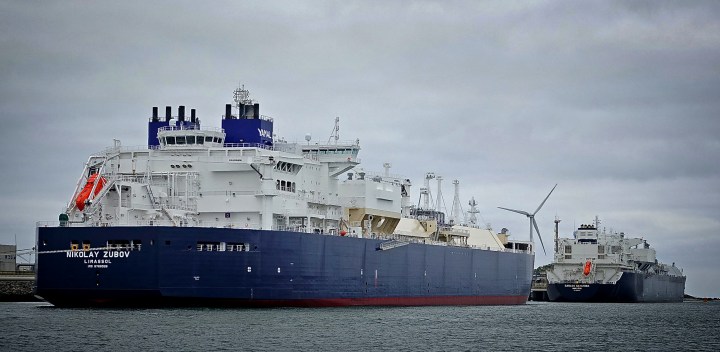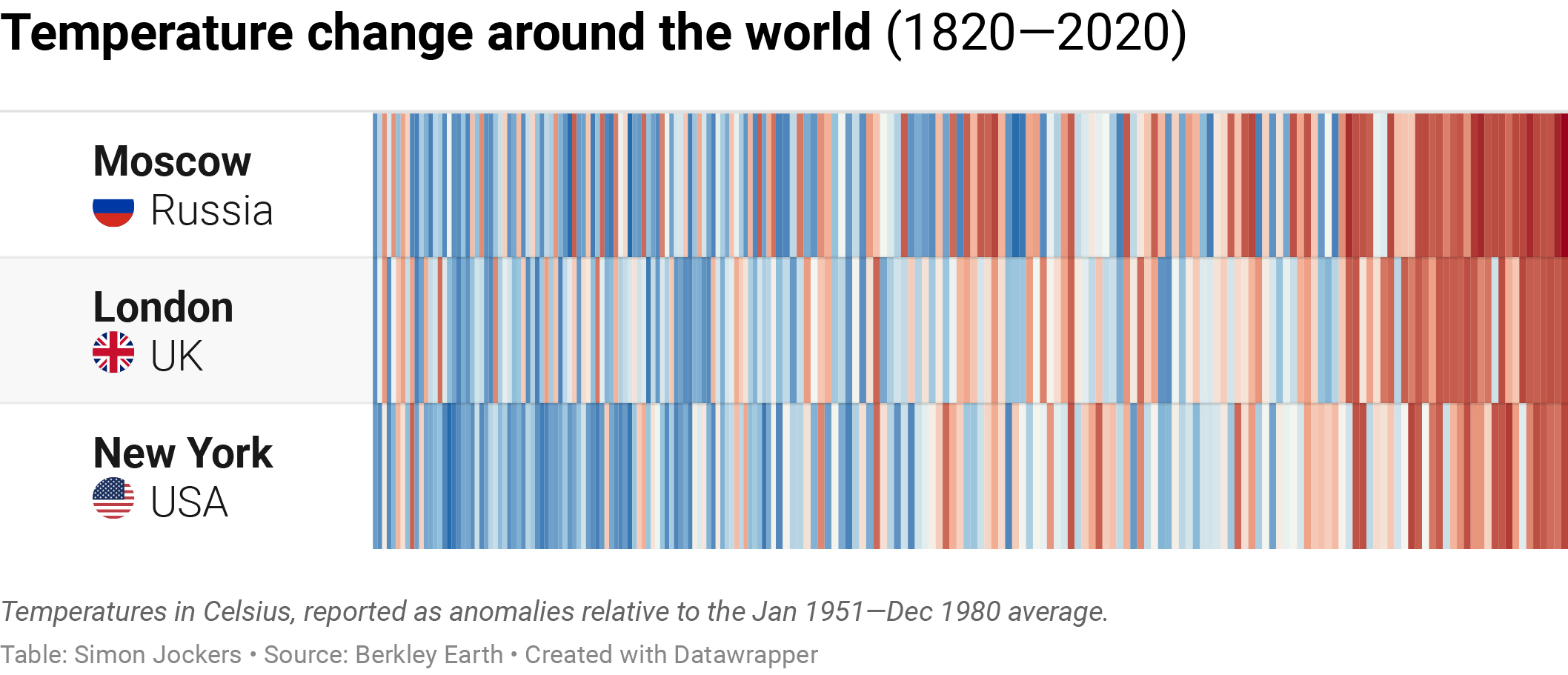OUR BURNING PLANET
‘Young people are in big trouble’ if the future is gas — James Hansen, father of climate change awareness

The Russian LNG mission has congratulated itself for smashing through the melting Arctic for the first time in January, raising temperatures within the science community.
When the gigantic gas carrier Christophe de Margerie reached the easternmost point of the Eurasian landmass on 16 January, heaving with an enormous batch of liquefied natural gas (LNG), she quietly made maritime, and climate, history.
Able to carry 172,600m3 of LNG, enough to supply the country of Sweden with its gas requirements for almost four weeks, the 299m-long carrier had been enlisted as part of a Kremlin-subsidised partnership to help test the Northern Sea Route’s commercial viability. Her mission signalled the first time that a merchant vessel had hauled cargo clear across the Northern Sea Route without icebreaking support in the deep heart of an Arctic winter.
Just days before she finished her voyage, Daily Maverick was the first to report that the Christophe de Margerie and sister LNG supertanker Nikolay Zubov had crossed paths just east of the New Siberian Islands on the morning of 12 January.
At the time, much of the world was consumed by US events leading up to President Joe Biden’s inauguration, as well as the pandemic. Yet, the passing of the two tankers at Far North from opposite sides of Eurasia – each without an icebreaker – edged cargo shipping towards year-round movement from both ends of the Northern Sea Route.
The Nikolay Zubov had left the Chinese port city of Dalian on Christmas Day, while the Christophe de Margerie was travelling east from northwest Siberia towards Cape Dezhnev, the Eurasian continent’s eastern extreme, as reported by Arctic newspaper Barents Observer.
Shipping superhighway ‘saving 3,000 tons of CO2’
Now the Christophe de Margerie’s arrival in January at Cape Dezhnev means that the window for goods transportation can be extended by up to two months, according to the Russian transport ministry. This, it hopes, will help develop the “transit potential” of the route, a key artery linking Asia-Pacific markets to the $27-billion Sabetta LNG port and its 26.5-trillion m3 onshore gas fields on northwest Siberia’s remote Yamal Peninsula.
Even more buoying for the Kremlin and Yamal LNG Project shareholders – that is, Russian natural gas producer Novatek (50.1%), fossil-fuel giant Total (20%), China’s National Petroleum Corporation (20%) and that country’s Silk Road Fund (9.9%) – is how favourably the Northern Sea Route seems to compare with the Suez Canal.
It took the Christophe de Margerie just under 11 days to cover 2,500 nautical miles between Sabetta and Cape Dezhnev at an average speed of 9.5 knots, despite ice conditions and limited visibility, says the ministry. Carrying a similar consignment via the Suez could take up to 35 days. Carbon-dioxide savings on the Sabetta-Cape Dezhnev route amount to “3,000 tons or 30%”, claims the vessel’s owner, Russian shipping company Sovcomflot.
CEO Igor Tonkovidov praised the route for “providing economic efficiency” and “significant reduction in the carbon footprint of cargo transportation”, while Transport Minister Vitaly Savelyev lauded the tanker’s Cape Dezhnev arrival as “another important page” in the development of the Northern Sea Route.
The opening up of this passage due to the Arctic’s dramatically warming climate conditions was bolstered by supertanker Christophe de Margerie’s icebreaking capabilities. She was named after the Total CEO who died in a 2014 plane crash in Moscow.
Built in 2016 as a prototype for a 15-strong fleet of Arc7 tankers now serving the Yamal LNG Project, she is a double-acting icebreaker featuring a dual design that enables her to achieve better open-water performance than conventional icebreakers. She can run ahead in open water through thin ice, but she can also sail astern – backwards – smashing her rear through heavy hummocks and ice fields up to 2.1m thick without support; and this is how she completed 65% of her January voyage.
Hansen – ‘Nuclear, not gas’
Not everyone is ready to embrace the Kremlin and co’s fossil-fuel conquests with a similar level of congratulatory enthusiasm.
In 2014, following Russia’s annexation of Crimea, the US Treasury Department imposed sanctions on Novatek, Russia’s largest independent natural gas producer, severing it from the US financial system. After Russian opposition leader Alexey Navalny’s arrest in Moscow, European Union lawmakers called on the union to halt completion of the controversial Nord Stream-2 pipeline, intended to double natural gas supplies from Russia to Germany across the Baltic Sea. Also in January, the US slapped sanctions on that pipeline, saying it could be wielded as a weapon of political pressure against western Europe.
And, as 2020 tied with 2016 as the hottest years on record, top climate scientists interviewed by Daily Maverick expressed reservations over the Yamal LNG Project’s environmental considerations – especially in the wake of record 38°C heat hitting Arctic Siberia in June, and October sea ice slipping to an all-time low of 5.28 million km2 (a reported 450,000km2 below the record low mark for October set in 2019).

Temperatures in degrees Celsius, reported as anomalies relative to the Jan 1951 to Dec 1980 average. Each stripe represents a year. Create your own climate stripes by visiting Blog.datawrapper.de/warming-stripes. (Image: Simon Jockers. Source: Berkeley Earth. Created with Datawrapper)
Professor James Hansen – the father of climate change awareness who first testified about global warming before the US Congress in 1988 – projects that renewable energy “will be complemented largely by either gas or modern nuclear power” by 2050.
“If it is gas, young people are in big trouble, because climate disasters and migration problems will grow and large sea-level rise with loss of coastal cities will become locked in,” Hansen told Daily Maverick.
The former head of Nasa’s Goddard Institute for Space Studies, Hansen is a proponent of modular fourth-generation nuclear power, which he champions in his upcoming autobiography, Sophie’s Planet. The title bears the name of his eldest granddaughter, who with Hansen is a co-plaintiff in a lawsuit suing the US government for the impacts of climate change on young people.
“Gas would be a case of civilisation walking straight into a disaster with full knowledge of what it is doing.”

US climate researcher James Hansen speaks during the UN Climate Change Conference COP23 in Bonn, Germany, 2017. (Photo: EPA-EFE / Friedemann Vogel)
Hansen, now director of Columbia University’s Climate Science, Awareness and Solutions programme, argues in a draft chapter of the book that “there is no credible path to climate stabilisation that does not include a substantial role for nuclear power”, as he does in a co-authored 2013 open letter.
“Quantitative analyses show that the risks associated with the expanded use of nuclear energy are orders of magnitude smaller than the risks associated with fossil fuels” – natural gas, he writes in his book, risks “locking in long-term fracking, methane emissions and groundwater pollution”.
“But I think there is now a fair chance that we will wake up during the next several years and support the needed technologies,” he told Daily Maverick. Such technologies, he hopes, would include renewables.
Gas – a necessary transition to clean power?
Describing herself as a “firm believer in stability rather than instability”, Professor Phoebe Barnard of Washington’s Conservation Biology Institute told Daily Maverick that natural gas had a “transitional role to play in the short term”.
This would help avoid “sudden major disruptions of supply in areas which could foment social, political and economic unrest and collapse of governments”, she says.
However, Barnard warns that the “Arctic is already under such threat from so many angles, and while production there is expensive, it is also very, very high risk. It requires absolutely the strongest levels of global oversight.”
The global change scientist in early 2020 co-authored a paper on behalf of the Alliance of World Scientists, calling for drastic action on the climate emergency to avoid “untold human suffering”. Accumulating nearly 14,000 scientist signatories, Barnard and colleagues published an update in Scientific American this month.
She says “the rush to exploit LNG in the Arctic is likely to go down in history as the clincher in the story of short-sighted profiteering”, and fingers a “high potential for corporate self-delusion and illusory marketing”.
To build Sabetta’s three-year-old LNG terminal, considerable infrastructure has been raised on the Arctic’s largest estuary, the Gulf of Ob, including a gas plant producing at least 16.5 million tons per year; an international airport boasting a 2.7km runway; and railway infrastructure for three liquefaction trains. Some 200 wells have been drilled and the Barents Observer reports that several LNG schemes in addition to the Yamal project are planned. In 2020 a dredging fleet dug up and removed 32 million m3 of permafrost to transform the shallow gulf into a shipping channel; “80 million m3 of soil” are to be excavated from the seabed in the next few years.
“For comparison: until now, the total volume of excavated soil for repair dredging works in the waters of all ports in Russia did not exceed 8-10 million m3 per year,” says state atomic-energy corporation Rosatom, telling its corporate newspaper that it has complied with environmental monitoring.
But Barnard says she does “not think we can go into the Arctic with the same exploitative mindlessness that got us into this mess in the first place”, emphasising that “climate-heating effects on the Arctic ripple across fisheries, forage fish, seabirds and marine mammals, including whales and seals”.
‘Fire sale’ as Arctic dips to ‘tipping point’
Professor Bob Scholes of Wits University’s Global Change Institute suggests that Russia’s LNG rush could be viewed as a “fire sale”.
“The market for fossil fuels will end about mid-century, still with lots in the ground. Anyone with unused resources at that stage has a stranded asset. Right now, demand in Europe for natural gas is high, as they exit from more polluting coal,” says Scholes, a global change authority.
“Couple that with the ‘warming dividend’ (for the first time, lots of Siberia is becoming liveable; Russia is one of the few beneficiaries of global warming) and opening of the Arctic sea route, and you have a window of opportunity for them,” he notes.
Scholes says natural gas is about “half as climate-damaging as coal” – seen from the perspective of “greenhouse gas emission per-unit-energy delivered to the end user, assuming no methane leaks”.
“It is also lower in particulates and sulphur. But if you have just 1% methane ‘fugitive emissions’ – less than the industry norm – the climate benefits disappear completely.”
Methane is the chief component of natural gas. Although relatively short-lived, with an atmospheric life of about 12 years, it is a more powerful warming gas than CO2.
Yet, the ecological effects of the changing Arctic – such as the consequences of permafrost melt and disruption of the worldwide oceanic circulation – are not fully understood (although northern ice melt is unlikely to raise sea levels, because the Arctic is not land ice like its southern counterpart, Antarctica).
What is known is that “as the ice melts, the Earth’s surface goes from reflective to dark, absorbing more solar radiation, and thus warming further”, explains Scholes.
“In the Arctic we are close to the tipping point – you can see that from the acceleration of melting, year on year.”
‘Berries that confound the imagination’
Russia, despite criticism, is charging ahead with its LNG offensive, insisting that the project is a model of sustainable development.
President Vladimir Putin, addressing the 2017 Sabetta launch of the Christophe de Margerie, said that “in developing the Arctic’s enormous wealth, our basic principle is not to cause any harm. We realise that this region’s ecosystem is very sensitive to any human interference. But I know your work in detail and I know for certain that the port, the ships that will use it, the production methods used, and the transportation system all use the most advanced technology and meet the highest environmental standards.”
In its 25-year sustainability report, majority shareholder Novatek says it “recognises the risks and implications of climate change, regularly assessing them, maintaining cryological monitoring, developing the reporting system on greenhouse gas emissions, and implementing innovative technology for reducing pollution”.
The gas producer adds that in Yamal it spent 1.4-billion roubles “on environmental protection and damage compensation, with negative environmental impact charges amounting to just 1% of total costs”.
“We paid a particular attention to monitoring and preserving the biodiversity in the north of the Yamal Peninsula, around the South-Tambeiskiy licence area as well as in the Ob Bay basin,” the report says.
“Nature in the Arctic is without equal and rich in contrasts – endless expanses of ice and snow turn into prodigal abundances of wildflowers and berries that confound the imagination,” the Yamal LNG Project website sings of Sabetta’s far-flung wilderness above the polar circle, where temperatures can plunge to -50°C. “It is a natural habitat for polar bears, reindeer, rare birds, animals and valuable species of fish.”
Novatek could not be reached for comment by the time of publication.
Another Yamal LNG tanker, the Nikolay Yevgenov, had left Sabetta port on 6 January, following the Christophe de Margerie. Marine Traffic data showed that, on January 29, the 299m merchant vessel had called at a South Korean port and was en route to Singapore. DM/OBP





















 Become an Insider
Become an Insider
A useful big picture perspective very pertinent to energy plays being promoted by Minister Mantashe: ““the rush to exploit LNG [in the Arctic] is likely to go down in history as the clincher in the story of short-sighted profiteering”, and fingers a “high potential for corporate self-delusion and illusory marketing”. and …LNG rush could be viewed as a “fire sale”…. Offering incentives to LNG and fossil gas exploration left, right and centre, with no national energy planning taken seriously in over half a decade – since an attemopt at an Integrated Energy Plan, IEP2016, was gazetted for comment – is a classic case of Ministerial self-delusion.
Thanks, nice article. Fossil fuels should be left in the ground as much as possible.
Methane is a 28 X more potent GHG green house gas than CO2. Research from the western US revealed that around 2,3% of this gas is leaked, lost between the well and the enduser.
Completely outdoing the benefit of using a cleaner fossil fuel that produces far less CO2 per kJ or kWh produced than coal or oil.
New projects are on their way in northern Australia, one in a quite far stage of planning and financing. Set up by a local billionaire, to construct an absolutely massive PV solar farm with BESS, battery energy storage system. This electricity will then exported through a HVDC High Voltage Direct Current undersea cable to Singapore and Jakarta. Much better than to dig up dirty Queensland coal, transport it in oil burning bulk carriers to Asia.
The other large project is to use PV solar power to produce hydrogen.